I think I got so caught up in the imminent return of our gorgeous Rosé, that I forgot all about some other not so happy news.
Or maybe I’m still in denial?
If you’ve been following along at home, then you’d know that we’re all out of our very popular 2019 Pinot Noir. With the exception of approximately 34 bottles…
(That may change once I come to my senses, accept the inevitable and realise I don’t have any in the cellar.)
This sad reality is yet another carry-over effect of the devastating bushfires of 2019. It left us without many of our Somerled stable wines including our dry red Pinot Noir.
At a tasting in 2018, at which we tasted a barrel sample of the 2019 Pinot, Rob was quoted as saying…
“2019 is going to be a cracker… if I don’t stuff it up!”
And as we all predicted, he didn’t “stuff it up” and it was “a cracker”! So aromatic with beautiful cherry and rosewater notes.
So, this week, let’s pay our respects to this versatile variety and much-loved wine.
In Memorium – Somerled 2019 Pinot Noir
History
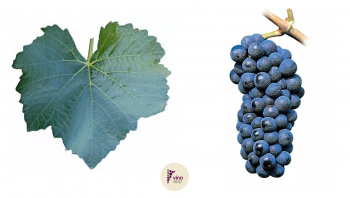 Pinot Noir is one of the world’s most ancient varieties. Its traditional home is the French wine region of Burgundy, but it thrives in many cool to moderate climates all over the world including Chile, Italy, California and New Zealand.
Pinot Noir is one of the world’s most ancient varieties. Its traditional home is the French wine region of Burgundy, but it thrives in many cool to moderate climates all over the world including Chile, Italy, California and New Zealand.
It is likely that a clone of Pinot Noir was brought to Australia by Captain Phillip with the first fleet in 1788. One hundred and fifty-odd years later, interest in Pinot Noir increased as consumers turned to varietal table wines.
Today Pinot Noir is the most widely planted red varietal in the Yarra Valley. The cool climates of Tasmania and the Adelaide Hills also offer great sites for Pinot Noir. The Pemberton and Great Southern regions in Western Australia are also showing potential.
In the vineyard
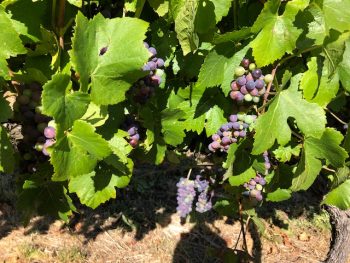 There is no doubt that Pinot is a challenging grape to grow. It is incredibly finicky when it comes to vineyard management. It is extraordinarily sensitive to climate and over-cropping. Vines with excessive crops struggle to ripen their grapes and tend to produce wines that are lightly coloured and lacking in mouthfeel and flavour (sometimes described as strawberry cordial).
There is no doubt that Pinot is a challenging grape to grow. It is incredibly finicky when it comes to vineyard management. It is extraordinarily sensitive to climate and over-cropping. Vines with excessive crops struggle to ripen their grapes and tend to produce wines that are lightly coloured and lacking in mouthfeel and flavour (sometimes described as strawberry cordial).
The thing is though, it’s even more challenging to make. The Burgundians have certainly nailed it. Although, they have been practising for thousands of years. The cool climate of Burgundy has proven to be a major factor, as is the geology of the soils there. Vine age is also critical. True of most varieties, but especially Pinot Noir, the best fruit tends to come from mature vineyards. Around 15 years old or more. Yields too, need to be kept low to get the best out of this grape. It needs all the flavour concentration it can get to show its best.
What is a “clone”?
When it comes to grape varieties, the term “clone” describes a version of the variety which is genetically different, but similar enough to be called that variety. I’m not even going to start on how the word clone doesn’t actually mean that! ie in the world of genetics a clone is something which is genetically identical (like twins), but that’s a whole other story.
Anyway…
We talk a lot about clonal selection when it comes to Pinot Noir. This is because winemakers have come to realise that the different clones result in both different characteristics and tastes. Some clones of Pinot Noir make bold and robust wines while others are pale-coloured but offer the most amazing floral aromas. There are over 40 different clones of Pinot Noir documented in the Catalogue of Grapevine Varieties and Clones and about 15 of these clones are popular throughout the world because of their quality.
The most common clone in Australia is MV6 which will produce a fruity, mid-weight wine. Other clones found in Australia include 115, Mariafeld and 777 which is known to be floral and delicate and is therefore the one Rob prefers to use!
Loving our blog? Sign up for weekly updates straight to your inbox…
101 ways to make Pinot
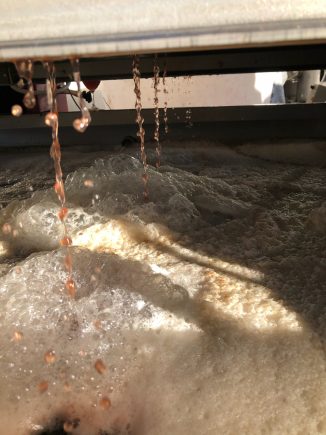 This is where Pinot’s versatility really comes into its own.
This is where Pinot’s versatility really comes into its own.
Whole bunch fermentation, partial carbonic maceration or a mixture of the two – fermentation can proceed in a number of different ways.
Some winemakers use a technique where the grapes are crushed and then held at cold temperatures for up to a week before fermentation begins. Others crush the grapes, removing the stalks in the process, but then add back varying proportions of stalks to the must. Some even drain off a portion of the juice prior to fermentation to concentrate the flavours, colours and tannins extracted from the skins.
I could go on all day, but when it comes down to it, we know Rob makes the best Pinot. So, how does he do it?
Somerled Pinot Noir
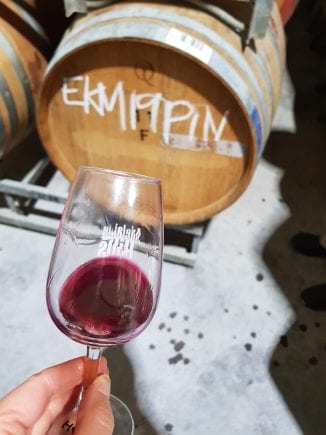 In terms of colour for the dry red, time on skins in the key. In short, this is how it is done…
In terms of colour for the dry red, time on skins in the key. In short, this is how it is done…
- Grapes are machine harvested when they are nice and ripe (but not too ripe!). Ideally, the grapes are at around 13 Baumé when they are picked. Rob is aiming for approximately 14% alcohol in the finished wine. Nothing more.
- Grapes are crushed and left sitting on skins for 7-8 days to develop the colour (and flavour of course) while fermenting.
What style of Pinot does Rob make?
Cloudy, funky, lots of oak, high in alcohol, forest floor flavours… are not words you’ll hear to describe Rob’s Pinot (almost got you, didn’t I?!)
Rob aims for a wine that is bright in the glass with distinctive Pinot aromas. He doesn’t mind some complexity as long as you can still tell it’s Pinot. It also has to be soft, which is why he keeps the alcohol low. He doesn’t mind a bit of tannin, but it needs to be soft and ripe, not lean and green.
Yum!
2019 Pinot Noir… you will be missed.
Until the 2021 comes along that is. Then we’ll all get over it and move on with our lives!
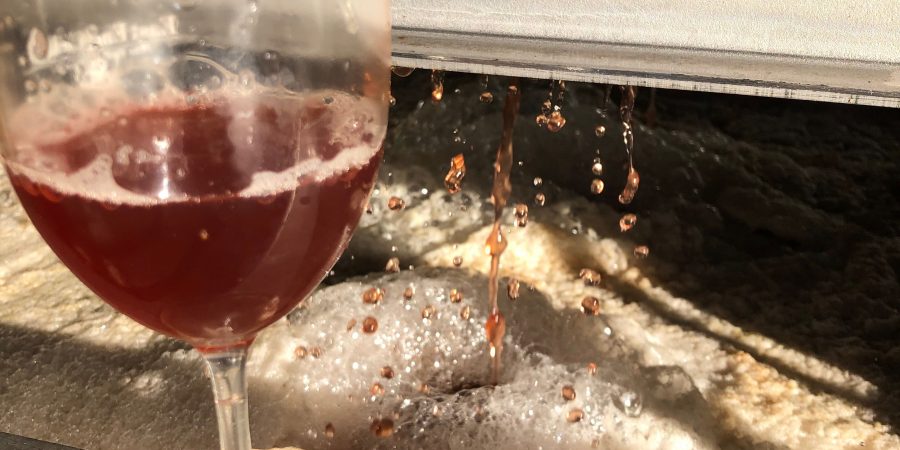
A great read about Pinot!
I do love the Somerled pinot and also look forward to 2021
Thanks Geoff and Lisa!
I usually don’t drink Pinot except if its Adelaide Hills and I will drink Somerled Pinot anytime in preference to any other. I recently tried Nepenthe and it was OK but nowhere near Rob’s.
Of course, it wasn’t Steven (no offense Nepenthe!)!
Another Hills Pinot I really enjoy is Ashton Hills. But only until the 2021 Somerled is released!
🥲🥲🥲🍷🍷🍷
I nearly cried when I went online, from a lockdown Victoria, to order yet again another 6 bottles. Most beautiful drop, every sip was exquisite pleasure. I don’t drink Pinot much these days but this bottle has me salivating at the thought. One bottle left in my wine rack. Holding onto it for now……but the time will come! Amazing! Thank-you!
Oh no! So glad I ordered those last two bottles…. Farewell 2019 Pinot… you and many other Somerled wines got me through Melbourne lockdowns and winter!
See you soon xx Sami and Kymmie